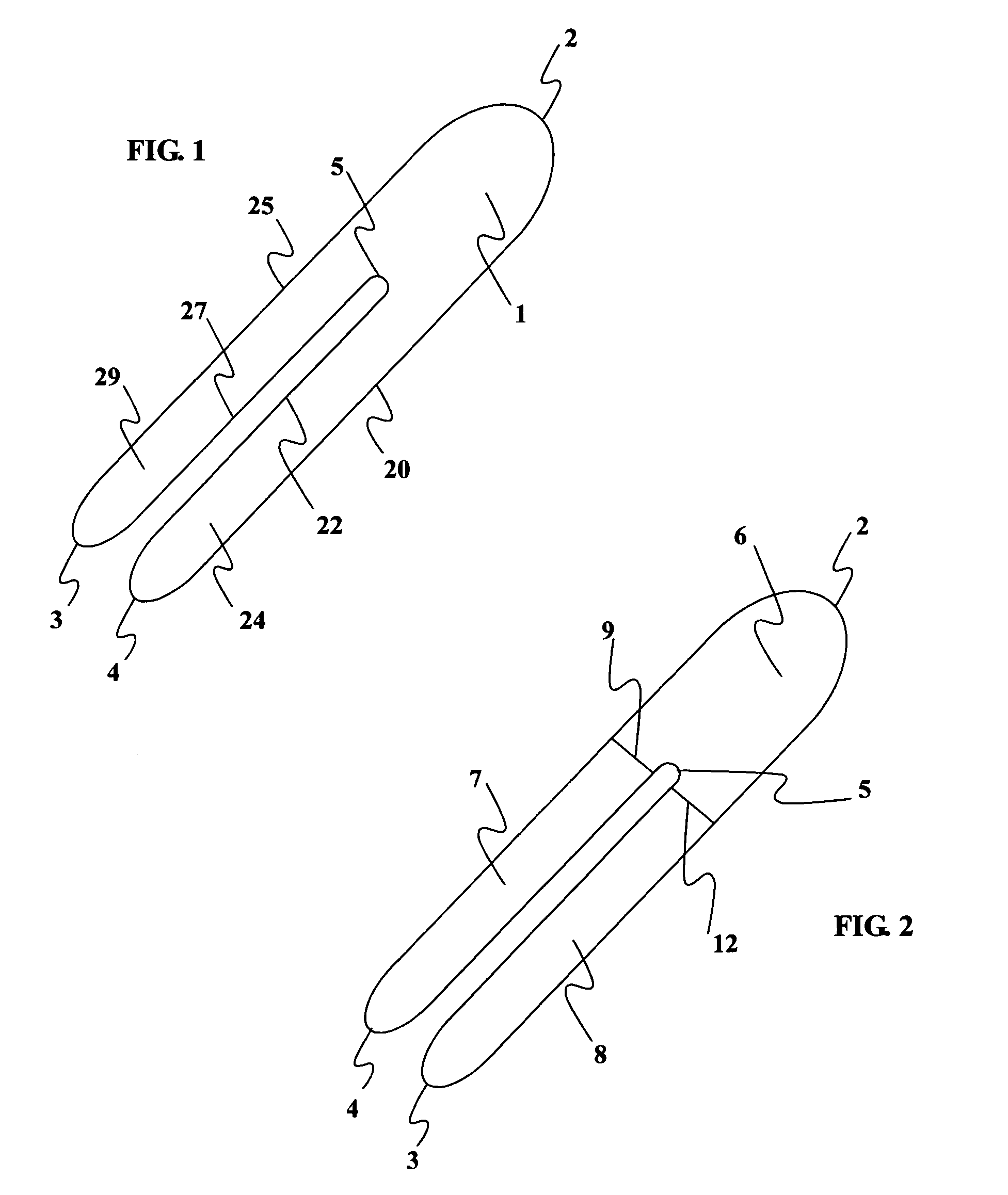Method and application of a self adhesive splint
a self-adhesive, wrist technology, applied in the field of rigid and semi-rigid splints, can solve the problems of immobilizing any range of motion, restricting wrist flexion, extension ulnar, radial movement, etc., to reduce the natural ability of the skin to stretch, reduce the overall elasticity of the skin, and limit unwanted wrist movement
- Summary
- Abstract
- Description
- Claims
- Application Information
AI Technical Summary
Benefits of technology
Problems solved by technology
Method used
Image
Examples
Embodiment Construction
[0020]The present invention consists of a thin, non-stretch, self-adhesive splint device illustrated in FIG. 1 (top view) and method of placing the splint in such a way as to maintain proper wrist position by limiting the ability of the skin surrounding the wrist and forearm to stretch. Limiting the skin from stretching reduces hand flexion and extension movements as well as ulnar and radial deviation. The limitation of movement is accomplished by reducing skin elasticity on the skin surface area generally surrounding the wrist without applying additional pressure to the median nerve.
[0021]Placement of two devices, on either side of the wrist, is required to reduce both flexion and extension movement. The method of application of the device on top of the wrist FIG. 4, when in the pronated position (palm down), limits flexion. A second device properly applied on the bottom of the wrist FIG. 7, in the supinated position (palm up), limits extension. Ulnar and radial deviation movements...
PUM
 Login to View More
Login to View More Abstract
Description
Claims
Application Information
 Login to View More
Login to View More - R&D
- Intellectual Property
- Life Sciences
- Materials
- Tech Scout
- Unparalleled Data Quality
- Higher Quality Content
- 60% Fewer Hallucinations
Browse by: Latest US Patents, China's latest patents, Technical Efficacy Thesaurus, Application Domain, Technology Topic, Popular Technical Reports.
© 2025 PatSnap. All rights reserved.Legal|Privacy policy|Modern Slavery Act Transparency Statement|Sitemap|About US| Contact US: help@patsnap.com



